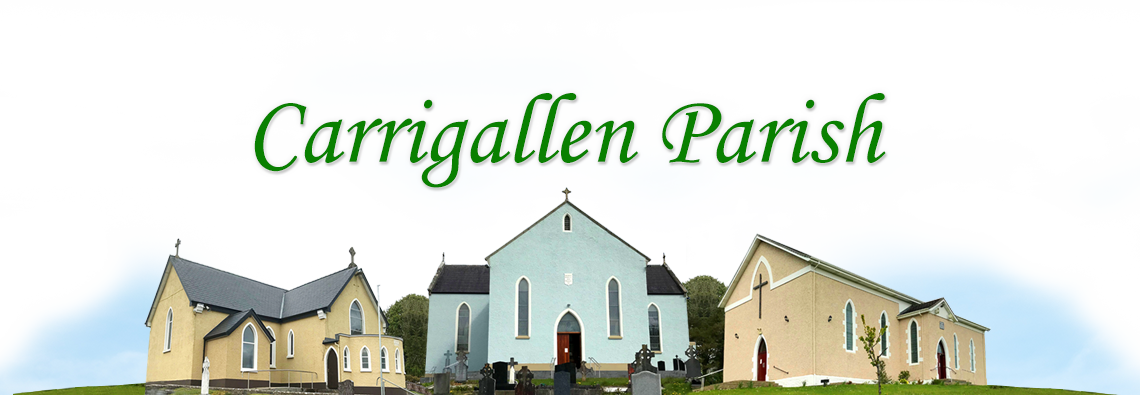St. Mary’s Church, Carrigallen
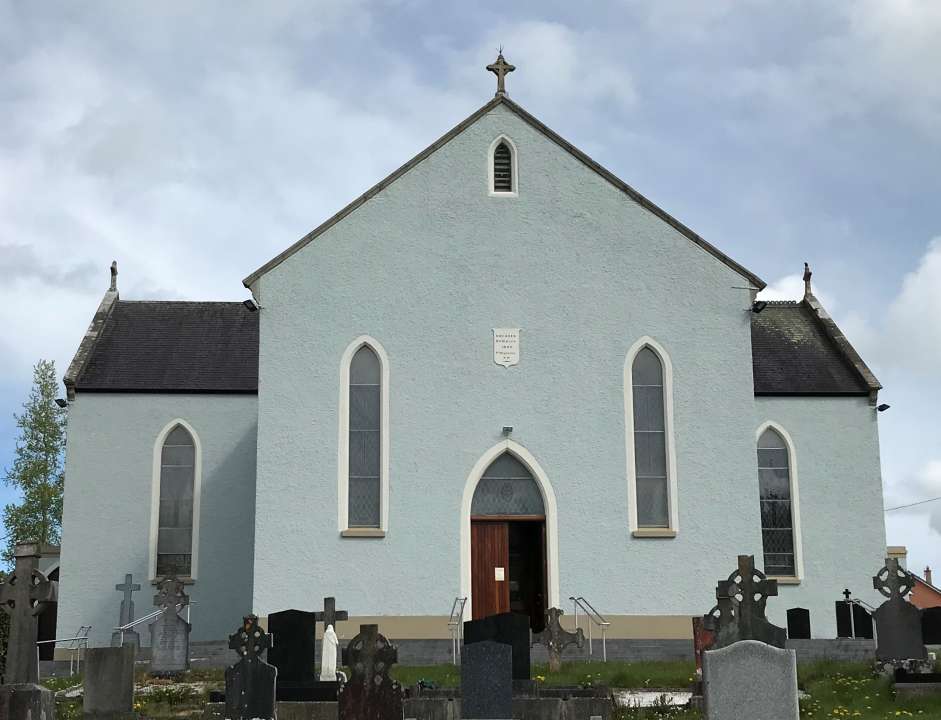
The original Church (in medieval times) was located in Bredagh on a rocky area at the edge of the town, now part of the Church of Ireland graveyard. Records show that in 1770, a mud-walled chapel was built in the townland of Cornaughty and was in use until 1839. A plaque was erected on this site in Jubilee year 2000. Subsequently, another chapel was built in the townland of Mullinadara but was demolished in a storm. The parish priest at that time was Fr. Patrick Magauran who was a native of Carrigallen decided on the building of the present St. Mary’s Church on a raised area just outside the town. In was built in 1846 and is cruciform in shape with gothic windows. Many renovations have been carried out over the years including re-roofing in 1931 and complete re-decoration in 2018.
St. Mary’s Church, Drumeela
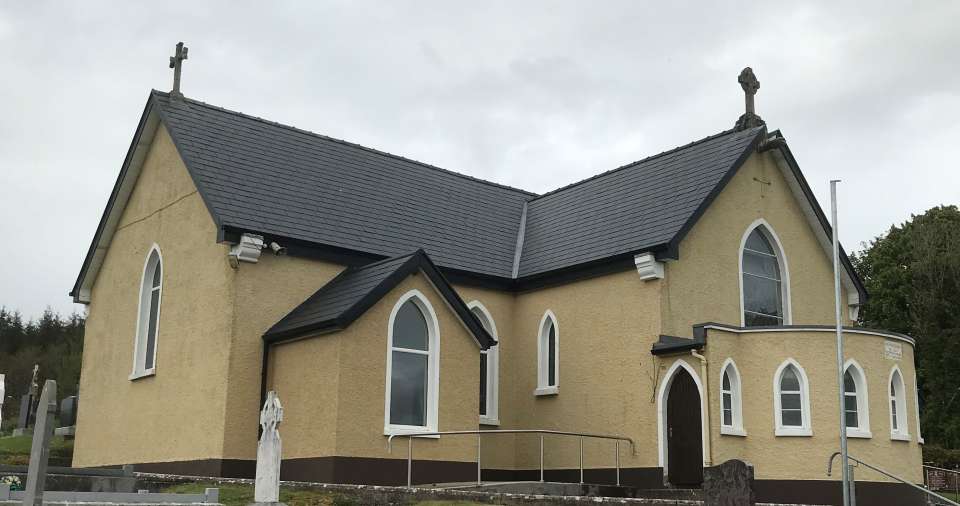
Earliest records indicate the presence of a medieval church in Newtowngore behind the present day Church of Ireland building. An 1804 map shows a chapel or Mass house in the townland of Aughabuí which was built c.1750 and served the people of the area until 1823-24 when a church was built in Drumeela townland by Terry O’Reilly under the guidance of the parish priest, Fr. Patrick Magauran. This church had a clay floor and no seating until 1860 when the then parish priest sought tenders for seating, building a chancel and other repairs. Further major improvements were carried out in 1957 and in the early 1970’s. St. Mary’s is a small intimate church in a quiet rural setting.
St. Mary’s Church, Drumreilly
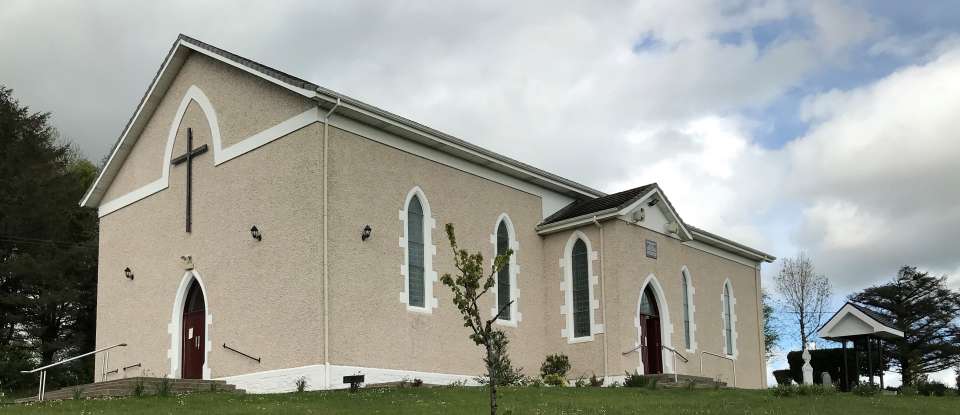
Originally, Drumreilly was a single parish with Garadice Lake in the centre and the parish church was located in Drumreilly townland in present day Aughawillan. In the early 1800’s the parish was divided into Upper & Lower Drumreilly and a new church was subsequently built in the townland of Ardunsaghan. It was a thatched structure, cruciform in shape with no ceiling, floor or seating and surrounded by a graveyard. During the 1860’s it was decided to build a new church in a more central location and a site was offered by a parishioner in the townland of Drumlea along the main road from Carrigallen to Ballinamore. Fr. Stephen Mc Tiernan was parish priest at this time and St. Mary’s Church and Bell Tower was completed in 1872. Rectangular in shape with gothic windows. The dedication ceremony on 8th September was presided over by Bishop Conaty and the sermon was preached by Fr. Michael O’Farrell S.J. a native of the townland of Gubbs. Stained-glass windows were added in the 1950’s, the church was reconstructed in 1973-74 and re-roofed in 1993. A new gallery and reardos were added in 2007.
Mullaghboy – Ardunsaghan Graveyard
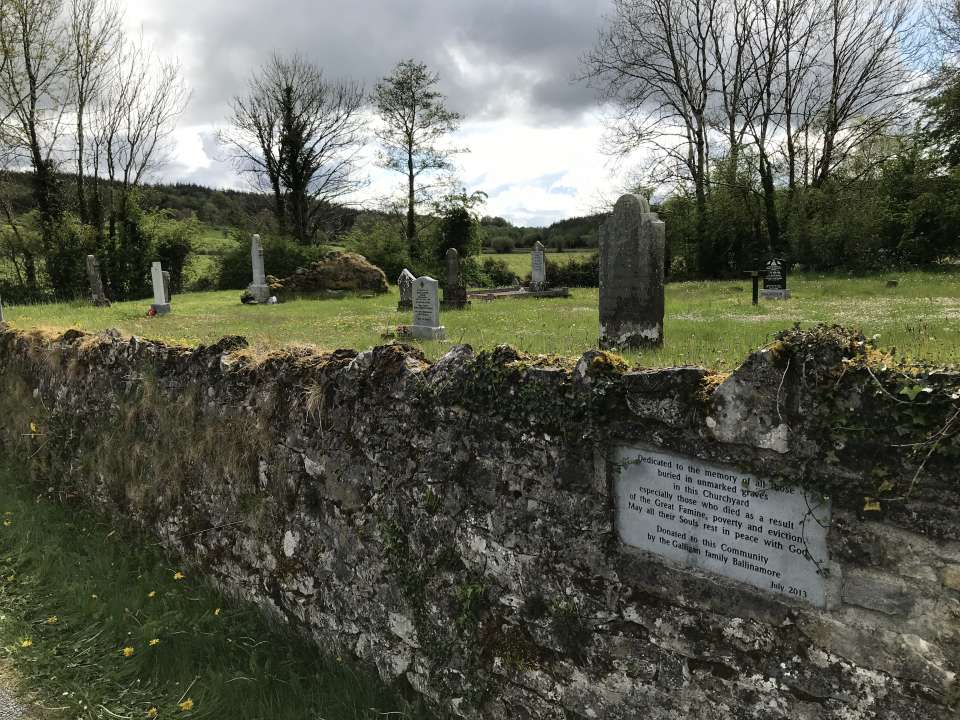
Following the division of Drumreilly in 1801 into two separate parishes (Upper and Lower), a new Church was constructed on a site in Ardunsaghan which subsequently became surrounded by a graveyard. While many local families continued to bury their dead in the old burial ground located in Drumreilly Townland on the shores of Garadice Lake, it is reasonable to assume that demand for new graves / plots in Ardunsaghan increased steadily over time peaking during the famine years. This graveyard which is listed as ref: LE025-104 in the Irish national monument archaeological survey continued in use as the Parish graveyard until 1937 when a new cemetery (St. Mary’s) was opened in Drumlea. However, a few families have continued to use their existing grave plots there up to recent times. To honour Jubilee Year 2000 a special Mass was celebrated in the graveyard by Fr. Charles Heery P.P. on Sunday 21st May 2000.
Aughabuí Chapel
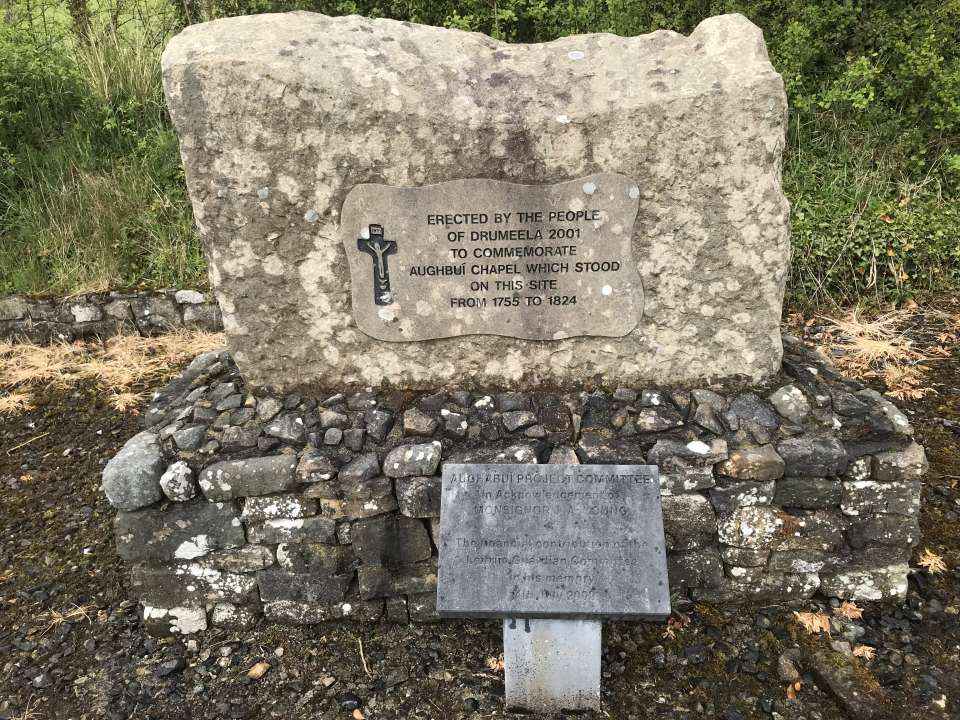
It is thought that Aughabuí Chapel (or mass houses as they were called at the time) was built around 1745. The cost of building such a Mass House was about £5, which was a substantial sum in those days considering a disastrous famine had hit the country in the late years of the 1720s, and a great frost in 1740 destroyed crops, particularly potatoes, and bringing with it further famine.
The only known reference to Aughabuí Chapel is in a map from the early 1800s of the Manor of Craigstown, which in later years would be better known as The Kilbracken Estate.
In 1824, Aughabuí Chapel was replaced by the new church at Drumeela, but continued its service for a further 20 years as a school. Over 100 years of service to the people of the area from £5 worth of investment, was money well spent in bad times.
Ref: Aughabuí Chapel by Tommy McCartin
Errew Cemetery
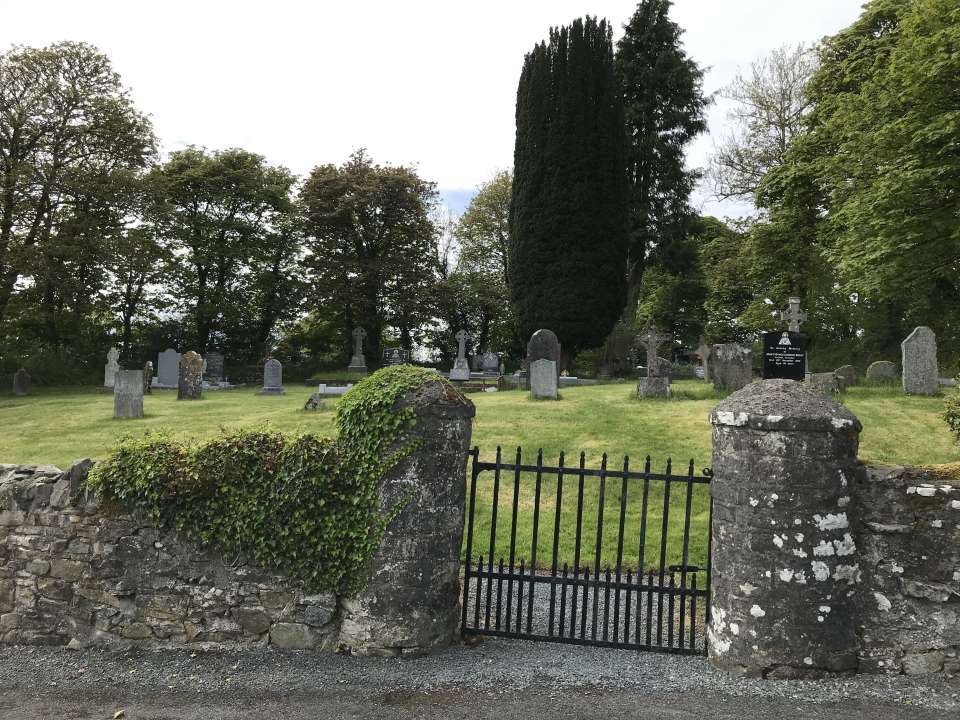
Errew cemetery is an ancient burial ground and is still used by catholics. Some of Tom Clarke’s relatives, Mary of New Orleans’ sister Mary and soldiers who died in the Battle of Ballinamuck in 1798 are all buried in unmarked graves in this cemetery. The graveyard is possibly a pre-christian burial ground.
St. Patrick’s Well
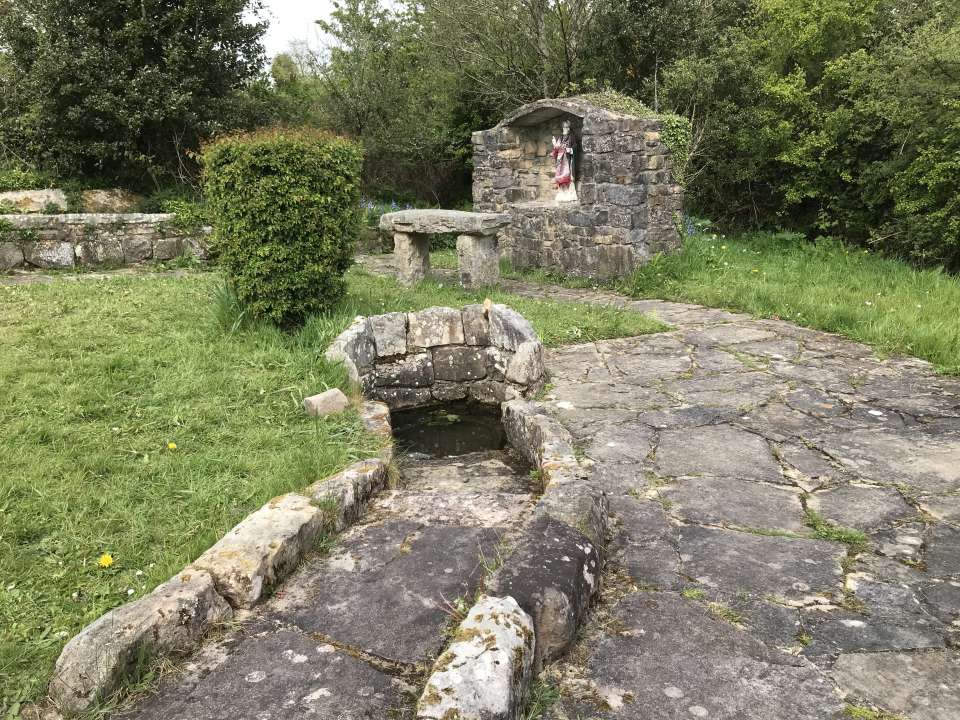
The only holy well in the parish is in the townland of Aughawillian. Tradition says that this well was originally in the townland of Bredagh. St. Patrick is thought to have been on his way to destroy Crom Cruach (a pagan god of pre-christian Ireland) when he halted at this site, preached and baptised people in the well. People sometimes visit the well and drink its water as a cure for toothache.
Ref: A History of Carrigallen by Patrick Maguire N.T. (1988)
